
OLDEST HISTORICAL LANDMARKS IN NEW YORK CITY
Enthusiastic preservationists will tell you that New York City is always changing: delis become bank branches. For years now punk venue CBGB has been a John Varvatos store. A huge basketball arena is rising among the brownstones of Prospect Heights. The five boroughs always seem to be looking ahead. As Valerie Paley of The New York Historical Society puts it, “New York, from a preservationist perspective, has been a victim of its own success.”
Maybe, but the City’s been around since 1624, and plenty of historical landmarks are still standing. The following catalogs some of the oldest sorted by category.

Lombardi’s • Courtesy, Lombardi’s Pizza
Oldest Pizzeria: Lombardi’s
32 Spring St., Little Italy, Manhattan
Founded: 1905
The Lombardi’s website, naturally, firstpizza.com, notes the place was licensed by New York City in 1905 making it the first pizzeria not only in the five boroughs but in all of the United States. It operated as a grocery store for a while before opening as a pizzeria in 1897. The coal oven pies are worthy samples of what has become a quintessential NYC dish.
While Paley says the shop’s claim of being the oldest is “possibly dubious,” she says it’s certainly historically relevant because it shows how diverse and open New York City was even more than a century ago. “The city,” she says, “welcomed different ethnic groups who in turn helped shape particular neighborhoods and food preferences.”
Counterargument: One Trenton, New Jersey pizzeria which opened in 1912 says it should be considered older than Lombardi’s which was closed between 1984 and 1994. If you start counting from the year it reopened, obviously, many pie purveyors have been around longer than Lombardi’s. Furthermore, Lombardi’s has moved down the street from its original location.
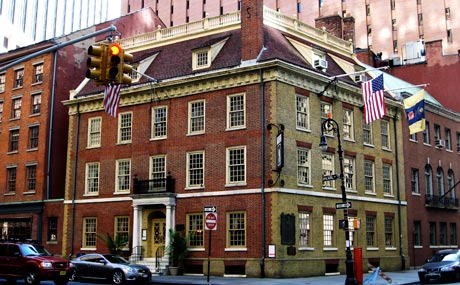
Fraunces Tavern • Photo: b2tse (via Flickr)
Oldest Restaurant: Fraunces Tavern
54 Pearl St., Financial District, Manhattan
Founded: 1762
George Washington bade farewell to his officers at a restaurant on the current site of Fraunces Tavern in 1783. There’s more early American lore there, too: the Sons of Liberty used to meet in the building, the New York Chamber of Commerce was founded there and some federal government offices were housed there when NYC was the capital of the
United States.
In fact, the Sons of the Revolution who operate the restaurant, say it’s Manhattan’s oldest building, period, based on the 1719 date when its first incarnation was built. It’s filled with relevant historical artifacts and serves hearty, reliable American fare. Paley calls it “a bit awesome (in the truest sense of that word)” to contemplate all the history that unfolded there.
Counterargument: The current Fraunces Tavern is a reconstruction and primarily a museum. Some architects contend that the re-created version may not be entirely similar to the building that hosted Washington. If you’d like to eat in a very old restaurant whose only business is food try Delmonico’s also in the Financial District. It’s been open in various forms since 1827.
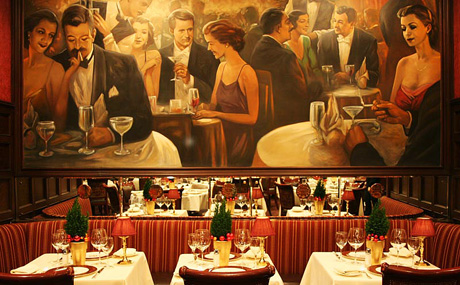
Courtesy, Delmonicos
Delmonico’s Steakhouse
56 Beaver St. (Beaver/So William)
Manhattan, NY 10004
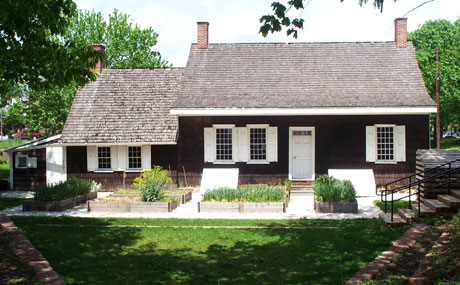
Wyckoff Farmhouse Museum
Oldest Building: Wyckoff House
5816 Clarendon Rd., East Flatbush, Brooklyn
Built: Around 1652
Back when this unassuming Brooklyn abode was constructed, as Paley sums it up, “New York was New Amsterdam.” No other building claims to be older. Wyckoff House was a working farm up until 1901. These days New York City owns the place and operates it as a museum outfitted with colonial artifacts. Take note, though, that the only way to see it is via guided tour. Paley calls it a good place to visit “in order to get a sense of what life was like in the past.” Activities include butter churning and pickling.
Fun Fact: In 1961, 309 years after it was built, Wyckoff House became New York City’s first official landmark.
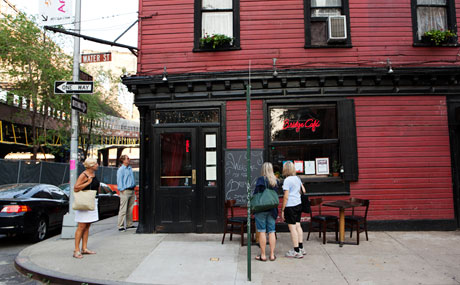
Bridge Cafe • Photo: Will Steacy
Oldest Bar: Bridge Cafe
279 Water St., Financial District, Manhattan
Founded: 1794
“I love this place,” says Paley. She notes that the Bridge Cafe claims that it’s not only the oldest continuously operating bar in New York City but that it was once also a brothel. “Entering this café is like stepping back in time,” says Paley, pointing out that many of the architectural details, for example, the ceiling, date back to when Manhattan’s oldest wood framed building was built.
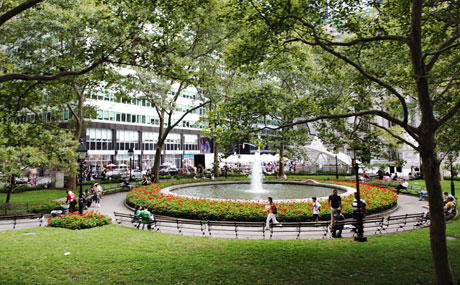
Bowling Green Park • Photo: Jen Davis
Oldest Park: Bowling Green Park
Broadway and Whitehall Street, Financial District, Manhattan
Built: 1733
According to The Encyclopedia of New York City, “the local government laid out a bowling green in 1733 and offered it for
rent to three local residents for one peppercorn a year” making it the oldest existing public park in the five boroughs. It had previously been used as a parade ground and cattle market.
Paley tells a fun story about the green space. In 1770, the British erected a gilded lead statue of King George III on a horse there. In 1776, after hearing the Declaration of Independence, “excited colonists marched to Bowling Green to tear it down and melt it into bullets.” A good employee, Paley was sure to add that the horse’s tail, the only remaining piece of the statue, is on display at The New York Historical Society.
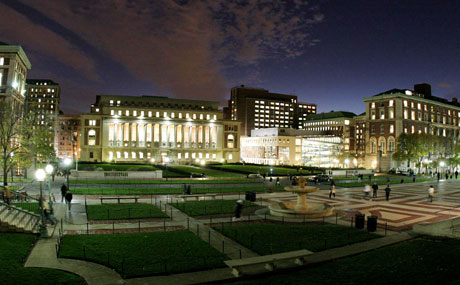
Columbia University • Photo: Kim and Jeffery (via Flickr)
Oldest College: Columbia University
2960 Broadway, Morningside Heights, Manhattan
Founded: 1754
There were eight students in the first class at what was then called King’s College. According to The Encyclopedia of New York City, they studied in the vestry room of Trinity Church. The school got its own building in 1760 and moved to its current location in 1897.
The Italian Renaissance style buildings on campus make it worth a visit, and the school’s notable alumni include such eminent personalities as Alexander Hamilton, Teddy Roosevelt, Barack Obama, Warren Buffett, Isaac Asimov, J.D. Salinger, Jenny Slate (of Saturday Night Live) and a long list of others.
Paley also notes that “Enrico Fermi and a cohort of physicists studied nuclear fission there until their ‘Manhattan Project’ moved to the University of Chicago in 1942.”

The New York Post • Photo: courtesy, New York Post
Oldest Newspaper: The New York Post
Founded: 1801
Speaking of Columbia alumnus Alexander Hamilton, he founded this newspaper (then the New York Evening Post) at the dawn of the 19th century. While the New York Gazette, founded in 1725, was the City’s first paper, the Post is the
oldest one still operating.
“Under William Cullen Bryant in the mid 19th century,” says Paley, “the publication’s liberal influence was substantial.”
This may come as a surprise to those who feel that the Post displays a different slant these days.
The Encyclopedia of New York City cites the Post’s early opposition to slavery and support of the 14th Amendment. Later, it became known for its creative headlines (i.e., “Headless Body in Topless Bar”). The issues may have changed, but New Yorkers’ fingers are still getting stained with the newsprint of a paper that existed long before Twitter, Gothamist or even electric lights.
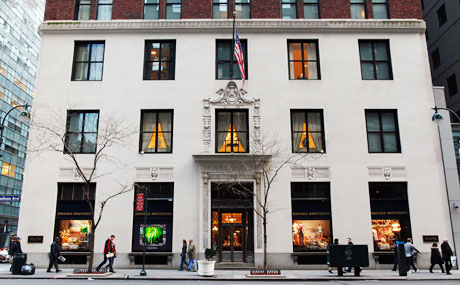
Brooks Brothers • Photo: Joe Buglewicz
Oldest Clothing Store: Brooks Brothers
346 Madison Ave., Midtown East, Manhattan
Founded: 1818
At its current location, Madison Avenue and East 44th Street since 1915, this clothing store has come to define its particular look. Paley calls it “the epitome of preppy country club style.” Abraham Lincoln wore a Brooks Brothers coat to his second inauguration, and, sadly, the same one the night he was assassinated. While Brooks Brothers currently has locations all over the world it all started with their first store at Catherine and Cherry Streets in New York City.
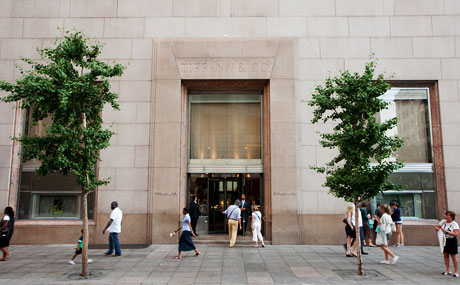
Tiffany & Co. • Photo: Will Steacy
Oldest Jewelry Store: Tiffany & Co.
727 Fifth Ave., Midtown East, Manhattan
Founded: 1837
Beloved by jewelry connoisseurs and film buffs alike, Tiffany & Co. existed long before Holly Golightly ever ate a Danish while gazing through its windows. Opened as Tiffany and Young in 1837 at 237 Broadway, the company started selling jewelry a few years later. At first, it was a purveyor of
“stationery and fancy goods”.
Its famous Blue Book catalog has been published since 1845, and it’s been planted at 727 Fifth Avenue since 1940. Tiffany’s also has sports tie-ins that might be surprising to some: the insignia that became the New York Yankees’ logo was initially struck by Tiffany’s onto a medal for a police officer shot while on duty, and the company makes the Vince Lombardi Trophy which is presented to the team that wins the Super Bowl, for example, the Giants this year.
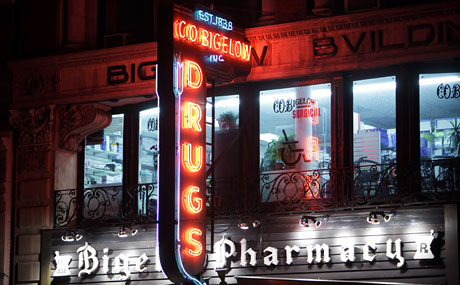
C.O. Bigelow • Photo: Willie Davis
Oldest Pharmacy: C.O. Bigelow
414 Sixth Ave., Greenwich Village, Manhattan
Founded: 1838
C.O. Bigelow’s website helpfully notes that Martin Van Buren was president when the place, which calls itself “the oldest apothecary in America”, opened. Through the years everyone from writer Mark Twain to filmmaker John Waters were regulars there.
Paley also notes some personal history that took place at C.O. Bigelow: “I learned to tie my shoelaces at the old soda fountain there in the 1960s,” she says. Regrettably, the soda fountain is no longer there, but the venerable store still stands.
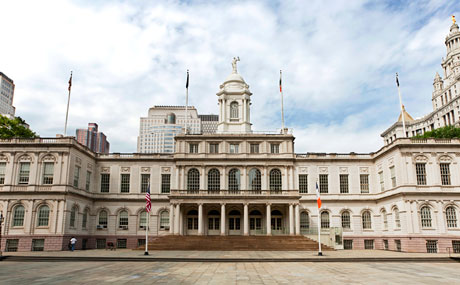
City Hall • Photo: Will Steacy
Oldest City Hall: City Hall
Park Row, Financial District, Manhattan
Built: Planning started in 1802; finished in 1812
Back when City Hall was built the builders found a creative way to cut costs. “It was clad in marble everywhere but its north facing rear,” explains Paley, because its Lower Manhattan location, the intersection of Broadway and Park Row, was uptown at the time.
According to The Landmarks of New York by Barbaralee Diamonstein-Spielvogel, “no one expected the city to extend north of Chambers Street” so why bother spending money on extra marble when nobody would see it?
That assumption has been thoroughly disproved in the past 200 years as New York’s population has risen by about 8 million. However, we still use the same City Hall, the oldest still functioning building of its kind in the nation. Visit nyc.gov for information about guided tours of the building.
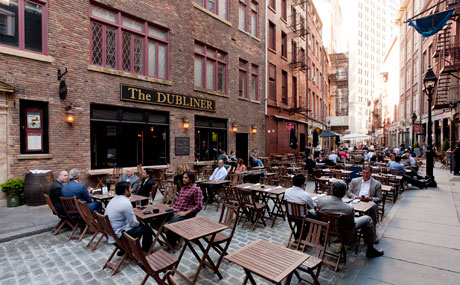
Stone Street • Photo: Will Steacy
Oldest Paved Street: Stone Street
Financial District, Manhattan
Paved: 1658
This cobblestone thoroughfare is said by many to be the oldest in the five boroughs. Its unusual surface, renovated in 2000, and the surrounding vintage brick buildings lend the stretch a classic vibe. It’s also packed with appealing food and drink options.
Counterargument: A 2000 New York Times article is among those to suspect that there may be older streets than this one. We haven’t heard of any other specific candidates, though.
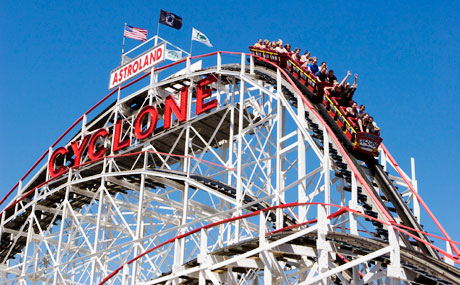
The Cyclone • Photo: Bami Adedoyin
Oldest Roller Coaster: The Cyclone
834 Surf Ave., Coney Island, Brooklyn
Built: 1927
Think “Coney Island,” and this iconic roller coaster is likely the first image that comes to mind. Heck, think “roller coaster” and the Cyclone might be the first thing that comes to mind. The ride’s famous 85 foot first drop and harrowing barrage of 60 mile per hour twists and turns have inspired extreme reactions of either fanatical devotion or lifelong terror since 1927. Just ask the ride’s biggest devotees. The fear that your car might fly off the track at any time is part of the fun.
Riding in the front car affords riders the best view while sitting in the rear gives the feeling of greater speed. Legend has it that a mute man once spoke for the first time after riding the Cyclone remarking, “I feel sick.”
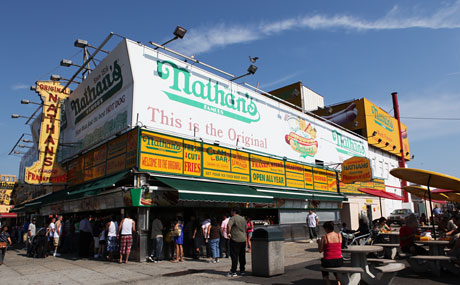
Nathan’s Famous • Photo: Jen Davis
Oldest Hot Dog Stand: Nathan’s Famous
1310 Surf Ave., Coney Island, Brooklyn
Founded: 1916
Founded by Polish immigrant Nathan Handwerker, Nathan’s Famous is an enduring testament to New York City’s multicultural tradition, its culinary prowess and its sense of fun. At its beginnings, one of his famous franks would set you back just five cents, half the price of his competitor, Feltman’s. It’s not all about hot dogs, either. The french fries and clams are popular choices as well. Try some after but, for your own sake, not before taking a spin on the Cyclone.
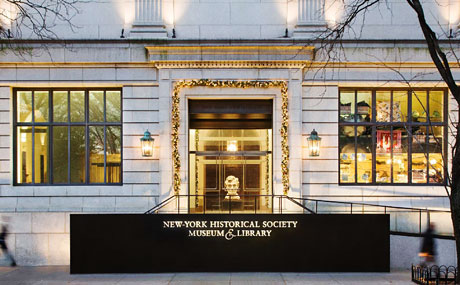
The New-York Historical Society • Photo: Laura Mozes Photography
Oldest Museum: The New-York Historical Society
170 Central Park West, Upper West Side, Manhattan
Founded: 1804
Paley proudly tells us that her employer “predates The Metropolitan Museum of Art by about 70 years.” The place is packed with artifacts and art that illustrate history of New York City and far beyond. Some examples from the broad collection: Napoleon’s authorization for the Louisiana Purchase and the original preparatory watercolors for John James Audubon’s The Birds of America.
While you’re there check out New York: A Portrait of the City, an assemblage of paintings and sculptures that act as a timeline of the five boroughs’ history located in the Henry Luce III Center for the Study of American Culture.
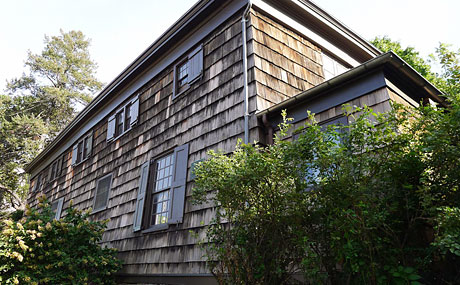
Flushing Quaker Meeting House • Photo: William Avery Hudson (via Flickr)
Oldest House of Worship: Flushing Quaker Meeting House
137-16 Northern Blvd., Flushing, Queens
Built: 1694
In 1657, attendees at a town meeting in Flushing approved the Flushing Remonstrance, a demand for religious freedom in the face of Governor Peter Stuyvesant’s order that Quakers be banned from colonists’ homes.
Fittingly, this structure built in 1694, is not only the oldest remaining house of worship in New York City but also the second oldest Quaker meetinghouse in the United States. It has welcomed such visitors as George Washington and William Penn, and, to this day, hosts monthly meetings of the Religious Society of Friends.
Guided tours are available on Sundays. Call 718-358-9636 for more information.
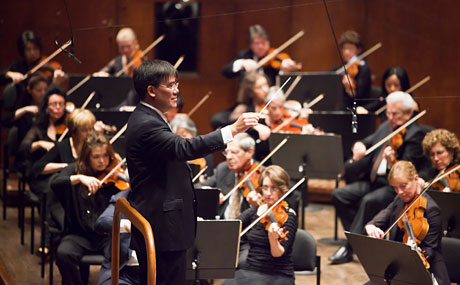
New York Philharmonic • Photo: Chris Lee
Oldest Orchestra: New York Philharmonic
Avery Fisher Hall, 10 Lincoln Center Plaza, Upper West Side, Manhattan
Founded: 1842
Think the Rolling Stones have been playing a long time? The New York Philharmonic has them beat. In 2010, they played their 15,000th concert. They’re not just the oldest orchestra in New York City, but also in the United States.
Founded by Ureli Corelli Hill, they performed the American premiere of Beethoven’s Symphony No. 9. Its final movement includes the words from the poem “Ode to Joy” in 1846. Tickets were $2 apiece then considered quite expensive. These days you can usually catch their performances at Lincoln Center’s Avery Fisher Hall, though they’re also known to show up elsewhere. Their free performances in City parks are always a good draw.